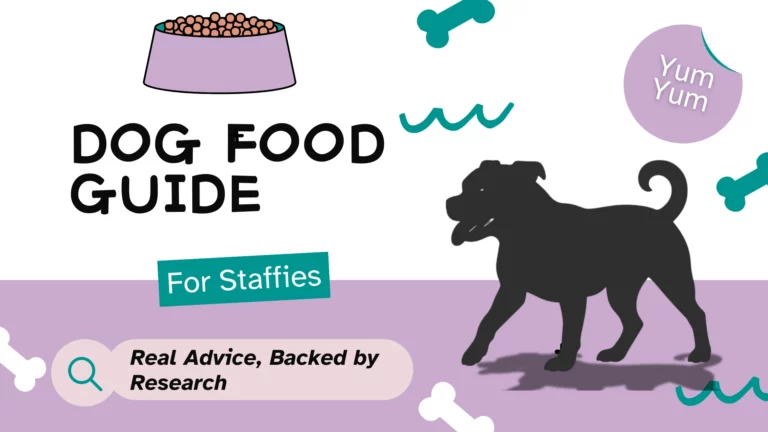Why Elevated Dog Bowls Might Do More Harm Than Good

Sick of cleaning up half-chewed kibble or mopping up puddles from a knocked-over bowl? I get how you feel. I felt the same way and understood the appeal for why elevated dog bowls could be a quick fix — it had to be a better way to feed the dogs without half of it ending up on the floor (or in the bin). What a waste!
So when I first saw raised dog bowls, I totally understood the appeal. Less mess, better posture, maybe even a more comfortable mealtime. But — and there is a big but — what I found as I dug deeper was that raised bowls aren’t a one-size-fits-all fix. In fact, they may not be the right choice for every dog.
Beyond mess and posture, there are bigger questions: Could they help with digestion or worsen the risk of bloat? Are they better for senior dogs with arthritis? Do flat-faced breeds need one to breathe easier while eating? The answers aren’t always straightforward — and that’s why it’s worth looking at both the pros and the potential downsides.
Learn why elevated dog bowls need careful consideration
What Are Elevated Dog Bowls, Exactly?
Elevated dog bowls are food or water bowls that sit off the ground, usually in a stand or adjustable frame that lifts them closer to your dog’s chest or shoulder height. Instead of having to stoop all the way down to the floor, your dog can eat or drink at a more natural and comfortable height.
They come in all sorts of designs — from basic metal frames to adjustable sets with built-in storage or even slow-feeder inserts. Some are sleek and modern, others more functional and fuss-free.
And they’re clearly catching on. One adjustable model featured in our best water bowls for dogs roundup sold over 600 units last month on Amazon alone. More dog owners are giving them a try — but that doesn’t necessarily mean they’re the best choice for every situation.
What the Concerns Are — and What Vets Say
While elevated bowls can offer comfort, they aren’t right for every dog — and in some cases, they may even increase health risks.
The Bloat Debate: Why It’s a Big Deal
Bloat (or GDV – gastric dilatation-volvulus) is a life-threatening condition where the stomach fills with gas and twists. It strikes quickly, mainly in large and giant breeds like Great Danes, Dobermans, and Weimaraners. When it happens, it’s an emergency.
So when brands claim elevated bowls prevent bloat, that’s a red flag — because research suggests otherwise.
One major study, led by Purdue University, tracked over 1,600 dogs and found:
- About 20% of GDV cases in large breeds were linked to raised bowls
- In giant breeds, over half (52%) of cases were associated with them
The takeaway: there’s no proof raised bowls lower bloat risk — and some evidence they might raise it.
What Vets Actually Recommend
Despite some product claims, most vets now advise against raised bowls for healthy dogs at risk of bloat — especially large or deep-chested breeds.
“The safest option, in the absence of stronger evidence, is to feed at floor level.”
— Veterinary Evidence, 2017 review
Still, there are exceptions. Vets may recommend raised bowls for dogs with:
- Arthritis, spinal issues, or mobility limitations
- Recovery from surgery
- Certain neurological conditions
It’s About Balance, Not Panic
Even then, height and eating habits need to be carefully assessed on a case-by-case basis.
If your dog is a large breed or a known gulper, speak with your vet before making changes — especially if you were drawn to raised bowls for tidiness or looks.
For dogs at risk of bloat, there are other steps you can take. Check out our 7 Practical Tips on How to Prevent Bloat in Dogs for simple habits that may help lower the risk.
Still unsure whether your dog is considered high-risk? This bloat guide from Vets Now breaks down which breeds are most affected — and what signs to watch for.
That doesn’t mean elevated bowls are inherently risky. But the bloat connection is significant enough to warrant caution. Make the decision based on what’s best for your dog — not trends or convenience.
When and Why Elevated Dog Bowls Can Makes Sense
Not every dog needs their food or water lifted off the floor — but for some, it can make a real difference in comfort, cleanliness, or daily ease. Here’s when a raised setup can genuinely help:
- Dogs With Arthritis or Mobility Challenges
If your dog hesitates to eat, lowers their head slowly, or shows signs of discomfort at mealtimes, joint pain might be making things harder than they need to be. A raised bowl lets them eat without stooping — easing pressure on the neck, shoulders, and elbows.
Some dogs even brace their front paws on the stand, something they can’t do with a bowl sliding around on the floor.
- Senior Dogs Who Struggle to Bend
Older dogs often deal with stiffness, spinal issues, or muscle loss that makes bending awkward or painful. If your dog prefers to lie down to eat, or struggles to lower their head, an elevated bowl may be a simple fix that makes meals more comfortable.
Tip: An adjustable-height stand gives you flexibility to find the right level as your dog’s needs change.
A Personal Note
In his final months, our late senior Staffy lost the use of his back legs. He would sit to eat and drink — not because he was lazy, but because he no longer had the strength to stand and lean into a bowl on the ground.
If I’d understood back then how much difference a raised bowl could’ve made, I’d have done it in a heartbeat. It’s something I’ll always wish I’d looked into sooner.
- Messy Eaters or Splashy Drinkers
Got a dog who splashes water, drags kibble across the floor, or treats their bowl like a toy? A raised setup can help. Elevation adds stability, keeps bowls from scooting, and reduces the mess zone — especially on hard floors or around water-absorbing mats.
Plus, bowls raised even a little tend to collect less debris, hair, or kicked-up dirt — a bonus for cleaner drinking water between refills.
Got a splashy drinker or a dog who paws in the water bowl? While elevated bowls help keep things stable, if your dog digs or paws persistently, switching to a no-spill bowl is usually the best fix. For tips, see What to Do When Your Dog Digs in the Water Bowl.
What About Big Dogs? Size Isn’t Always the Whole Story
It’s common to assume that large breeds automatically need elevated bowls — after all, their longer legs and bigger frames seem to call for it. But size alone doesn’t tell the full story.
According to Vets Now, the highest risk of bloat (GDV) is found in large, deep-chested breeds weighing over 40kg — dogs like Great Danes, Dobermans, and Saint Bernards. Risk also increases with age and is higher in purebreds.
By comparison, my two Staffies each weigh around 25kg — considered “huge” by some, but below the 40kg threshold linked to the greatest bloat risk. For healthy, young dogs under that weight, elevated bowls aren’t necessarily harmful, but it’s always wise to check with your vet if you’re unsure.
Ultimately, your dog’s individual health, breed, and eating habits matter more than just their size. Elevated bowls can be helpful for some — but they’re not a one-size-fits-all solution for every big dog.
For a deep dive on choosing the right water bowl for large breeds, check out our guide: Dog Water Bowls for Large Dogs. At the end of the day, they’re just higher-capacity bowls — whether you’re using them for food or water.
When Elevated Bowls Aren’t the Right Fit (or Need Tweaking)
Raised bowls can make a big difference for some dogs — but in the wrong setup, they might cause more issues than they solve. Here’s when to think twice:
- Fast Eaters (Especially Large Breeds)
If your dog hoovers up food like there’s no tomorrow, lifting the bowl might actually make things worse. For large breeds especially, fast eating is tied to bloat risk — and a raised bowl can make gulping even easier.
Some owners try slow-feeder inserts made for elevated stands, but those aren’t always suited to aggressive chewers like Staffies. If your dog is a power chewer, a flimsy plastic insert won’t last long.
If speed is the issue, start with a proper slow feeder — even if it means keeping the bowl on the floor for now.
- Pushy or Boisterous Eaters
Dogs that paw, shove, or body-check their bowls can turn a lightweight stand into a flying saucer. That’s messy at best — dangerous at worst if you’re using ceramic or glass bowls.
If you’re set on elevation, go for something with a heavier base, non-slip feet, or even a wall-mounted option. But for rowdy eaters, floor-level might be the safer, simpler choice.
- Puppies Still Growing
Young pups are still figuring out the world — and their bowl setup is no exception. Raised bowls usually aren’t the best pick during the chewing and growth stage.
Not only might they gnaw on the stand, but their proportions change quickly. What fits today could be too low or awkward next month. Unless you’re using an adjustable setup, it’s often better to wait until they’ve finished growing before making the switch.
Tips for Choosing the Right Elevated Bowl Setup
If you’ve decided a raised bowl is the right call for your dog, it’s worth getting a setup that actually works — for both of you. Here’s what to keep in mind:
- Adjustable Height = Better Long-Term Fit
Fixed-height stands can be hit or miss — especially for growing dogs, or homes with different sizes of dogs. An adjustable design lets you tailor the height to your dog’s build and posture.
A good rule of thumb? The bowl’s rim should sit roughly at chest height: high enough to prevent stooping, but low enough that your dog isn’t lifting their head awkwardly to eat or drink.
Plastic bowls are best avoided in any setup — but especially raised ones. They’re prone to scratches, can harbour bacteria, and may cause skin irritation or chin acne in some dogs.
Stainless steel is the safest bet (plus it’s usually dishwasher-safe). Ceramic can work too, as long as it’s food-safe and heavy enough not to rattle or tip.
- Don’t Forget the Stand
It’s easy to clean the bowls — but don’t overlook the stand. Raised setups can collect food grime, water drips, or fur fluff over time.
Look for smooth, water-resistant materials, and removable bowls that can be washed separately.
- Using It for Water? Clean Often
Just because a bowl is lifted off the floor doesn’t mean the water stays any cleaner. Dust, fluff, and backwash can build up fast — and elevated stands sometimes make it easier to overlook.
Even if it looks like a clean dog water bowl, invisible germs can build up quickly if it’s not changed and scrubbed often. Best practice is to rinse and refill daily, and deep-clean at least once a week. If you need a solid routine, here’s a guide on how to keep a truly clean dog water bowl — and why it matters more than most people think.
- Don’t Forget about Crate Compatibility
If your dog eats or drinks in a crate, clip-on or attachable bowls can be a smart workaround. They’re technically “elevated,” but super practical — helping prevent tipping, crowding, and spills in tight spaces.
Final Thoughts: Can Elevated Dog Bowls Actually Help?
They can — when used for the right reasons, with the right fit, for the right dog.
Elevated bowls can make mealtimes easier for some breeds like Staffies, but they’re just one piece of the puzzle. If you’re tackling spills, picky drinking, or want a hands-off option, our guide to the Best Water Bowls for Dogs breaks down the top elevated, no-spill, and automatic bowls — with practical tips to help you choose the right one for your dog.






